TCL MQLED85, or model C765, is a television that can really surprise, especially in this price range. It is one of the cheapest models with mini-LED technology, which is immediately evident in the picture quality. The blacks are deep, and the brightness is sufficient even in a brightly lit room. With a large number of dimming zones, watching movies in the evening is a pleasure – the blacks are truly deep, and the image in dark scenes looks clear. However, it is not perfect – in some shots, minor issues can be noticed with small bright elements, but this is really a minor detail compared to what this model offers. Google TV works wonderfully here – there are plenty of apps, and using the system is simply convenient. Voice control in Polish works flawlessly, which can be particularly useful if you don’t want to type in movie titles using the remote. Of course, there are minor shortcomings, such as the lack of recording, but these are not things that hinder day-to-day use. For gamers, it is also a great option. HDMI 2.1 support, VRR, and low input lag mean that the television handles consoles well and competes without issues with more expensive models from Korean or Japanese manufacturers. In this price range, it is hard to find something better when it comes to smooth and responsive gameplay. During testing, we encountered a few minor software issues, but it’s hard to say if that’s a serious downside. We hope that TCL will release updates, so there is a chance that this issue will be quickly addressed. TCL MQLED85/C765 is an excellent choice if we are looking for a television with good picture quality and modern features at a reasonable price. It is a model that combines affordable mini-LED technology with a user-friendly Google TV system and also performs excellently in gaming. Minor software shortcomings are something one can live with, especially considering what this television offers in its class.
- Matching (Score)
- Our verdict
- TV appearance
- Where to buy
- Contrast and black detail
- HDR effect quality
- Factory color reproduction
- Color reproduction after calibration
- Smoothness of tonal transitions
- Image scaling and smoothness of tonal transitions
- Blur and motion smoothness
- Console compatibility and gaming features
- Input lag
- Compatibility with PC
- Viewing angles
- TV efficiency during daytime
- Details about the matrix
- TV features
- Apps
- Playing files from USB
- Sound
TCL MQLED85 / C765 vs Hisense E8Q
Direct compare
C765 / MQLED85
E8Q

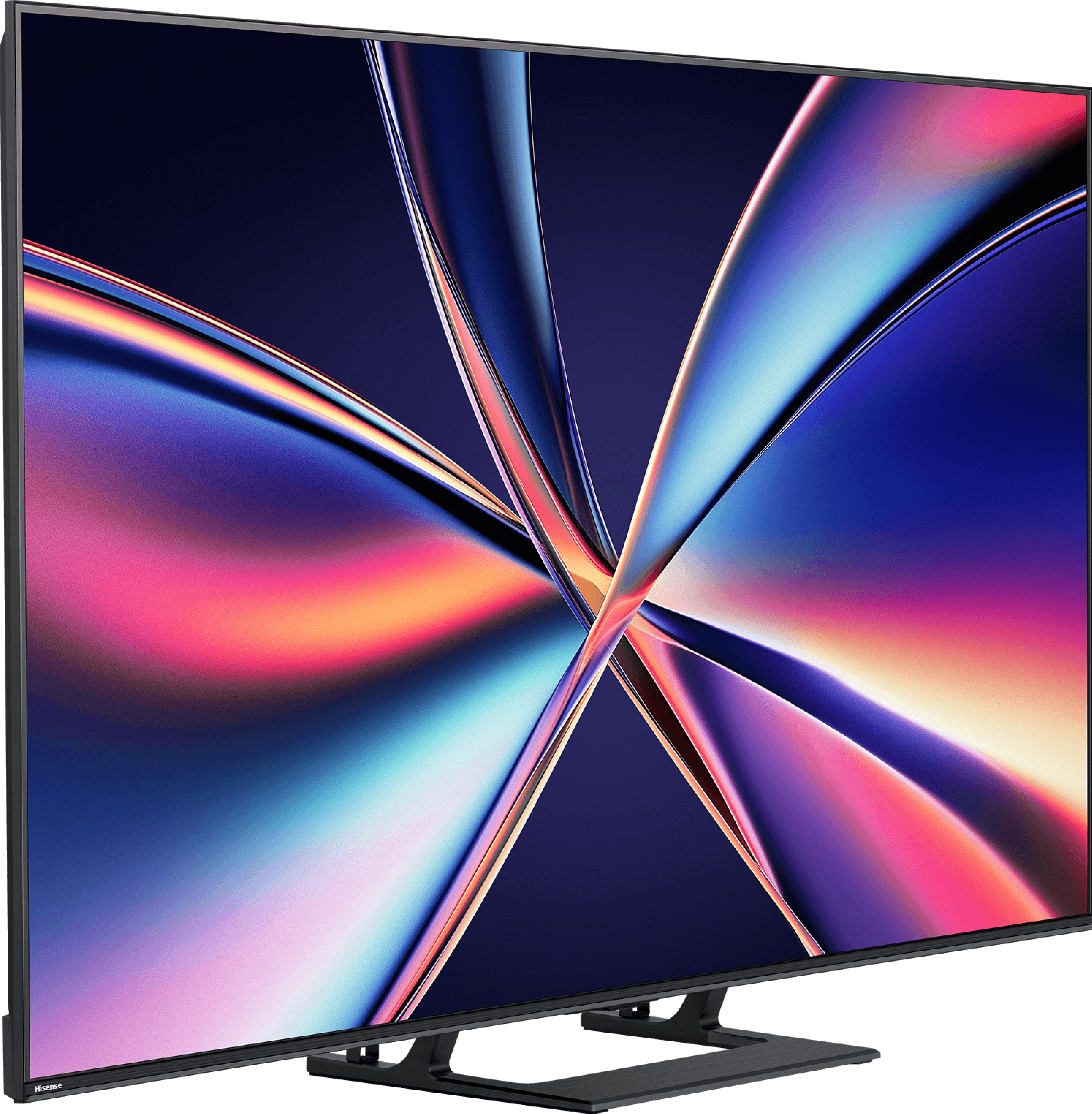
Panel type: LCD VA
Resolution: 3840x2160
System: Google TV
Model year: 2024
Complete the survey to find out the result

Panel type: LCD VA
Resolution: 3840x2160
System: VIDAA
Model year: 2025
Complete the survey to find out the result

Overall rating
7.2
7.0
Movies and series in UHD quality
6.8
6.7
Classic TV, YouTube
6.6
6.8
Sports broadcasts (TV and apps)
6.5
6.5
Gaming on console
8.6
8.0
TV as a computer monitor
8.6
8.6
Watching in bright light
6.3
6.2
Utility functions
7.1
8.9
Apps
9.6
7.7
Sound quality
6.9
5.5
Complete the survey to find out what fits your preferences
Advantages
Great choice for gamers - a lot of features, low input lag, 144Hz
High brightness of the screen - good performance during the day
Good black levels and contrast
Advanced Google TV
Premium build quality at a low price
Great contrast and deep black
Very good fluidity of tonal transitions (close to reference level)
High brightness
Support for 4K 144 Hz and even 240 Hz in Full HD
VRR, ALLM, G-SYNC – a complete package for gamers
Low input lag
Many classic TV features built into the VIDAA system
Disadvantages
Average viewing angles
No recording function
No support for HGiG (makes HDR setup difficult on consoles)
U7Q
Our verdict
The Hisense E8Q is a television that clearly draws heavily from the U7Q model – and that's a good thing. After all, it is its European version, not another "diet" mutation. Just a few moments with this screen reveal that the E8Q is trying to impress. And in many ways, it really succeeds. Right off the bat – what stands out: the black is deep, the contrast is high, and the brightness exceeds the threshold that we can simply call satisfying. Let's add to that almost perfect smoothness in tonal transitions, and we have an image that looks very mature, especially for this price segment. In gaming? Just as good. It supports VRR, ALLM, 144 Hz in 4K, and even 240 Hz in Full HD – it's hard to find fault here. Well… almost. Because the E8Q has one additional flaw compared to the U7Q – the sound. In our unit, even at moderate volume levels, the back of the casing started to resonate, generating quite unpleasant crackling noises. This might be a flaw in the test sample, but since the U7Q simply performed better – it's worth noting. Especially if you find both models at a similar price. We can confidently state that the E8Q is a television that can boldly compete for the attention of those looking for a quality Mini-LED at a reasonable price. If a good deal comes along, it's definitely worth it – because we get almost the same as with the U7Q. And that means a really solid picture, excellent gaming features, and overall very good equipment that you can stick with for a long time.
TV appearance





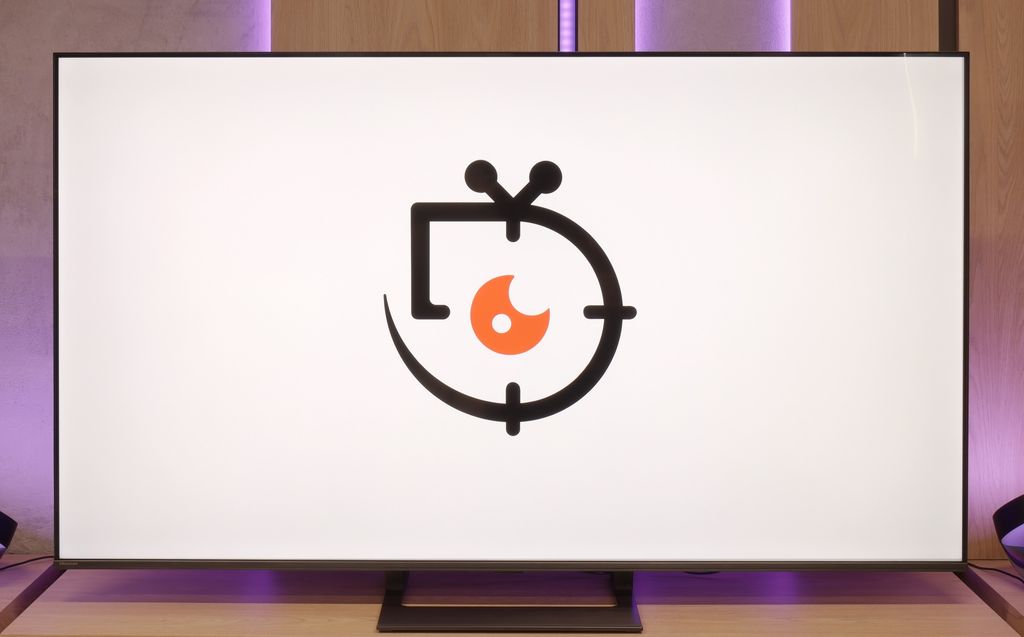
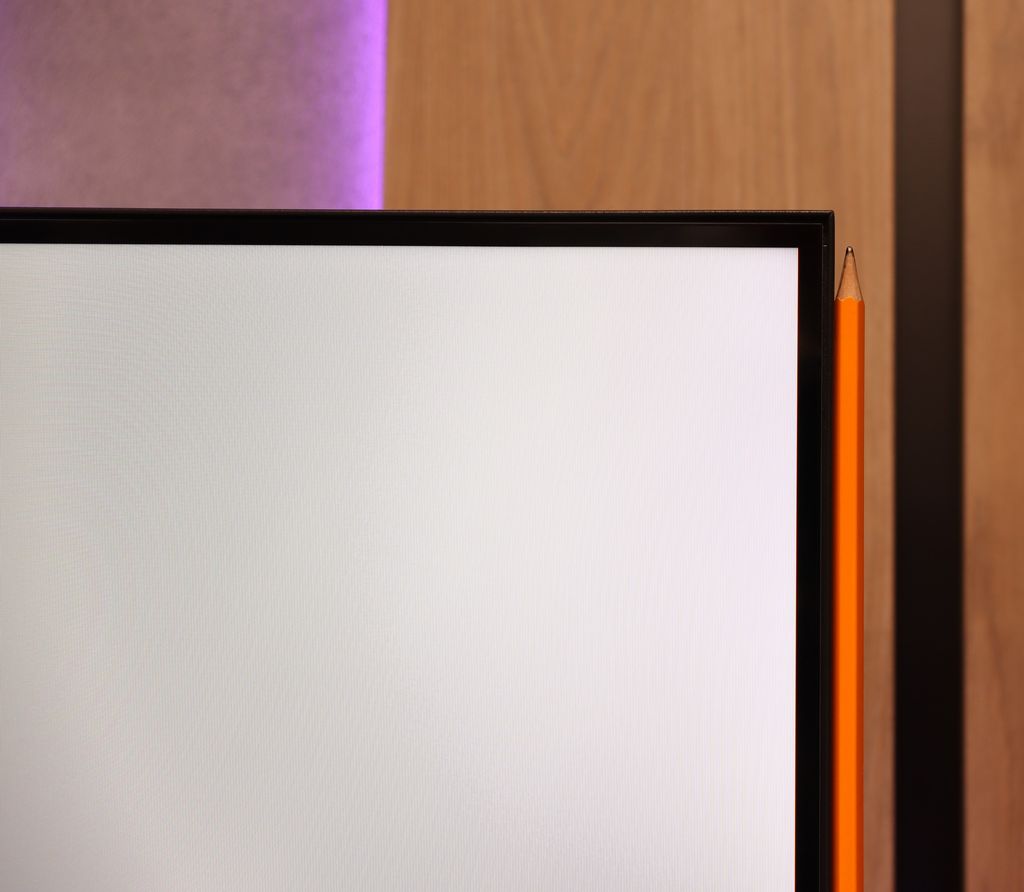
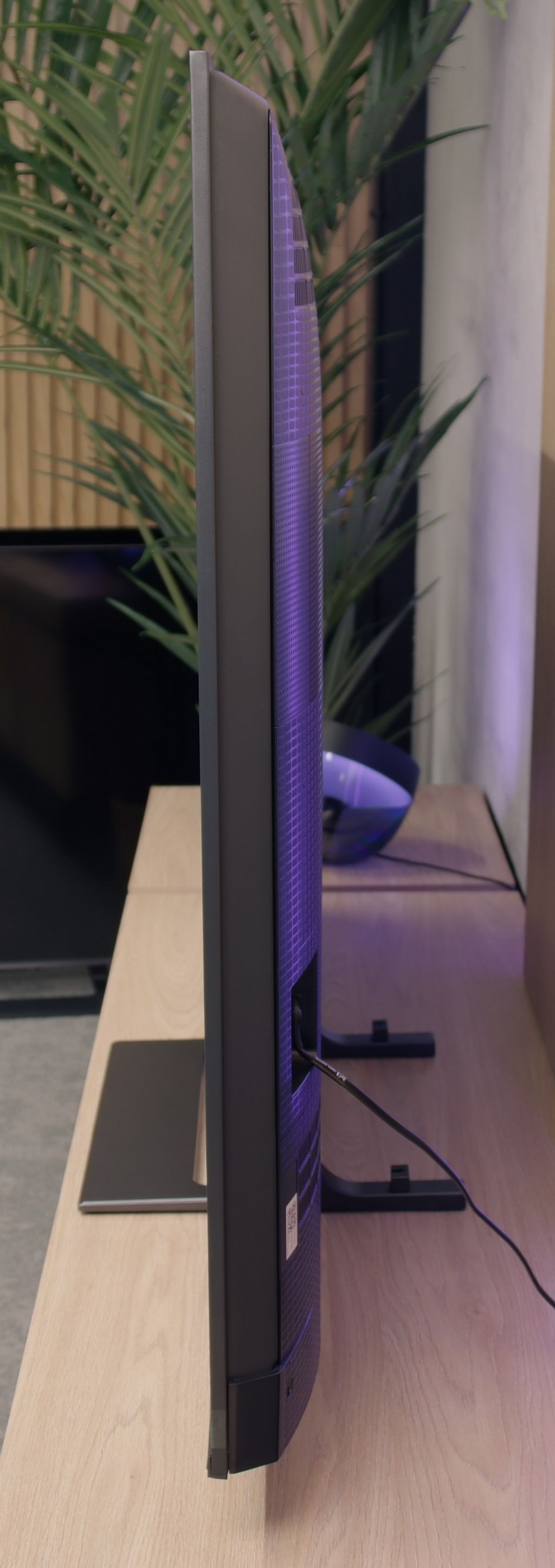
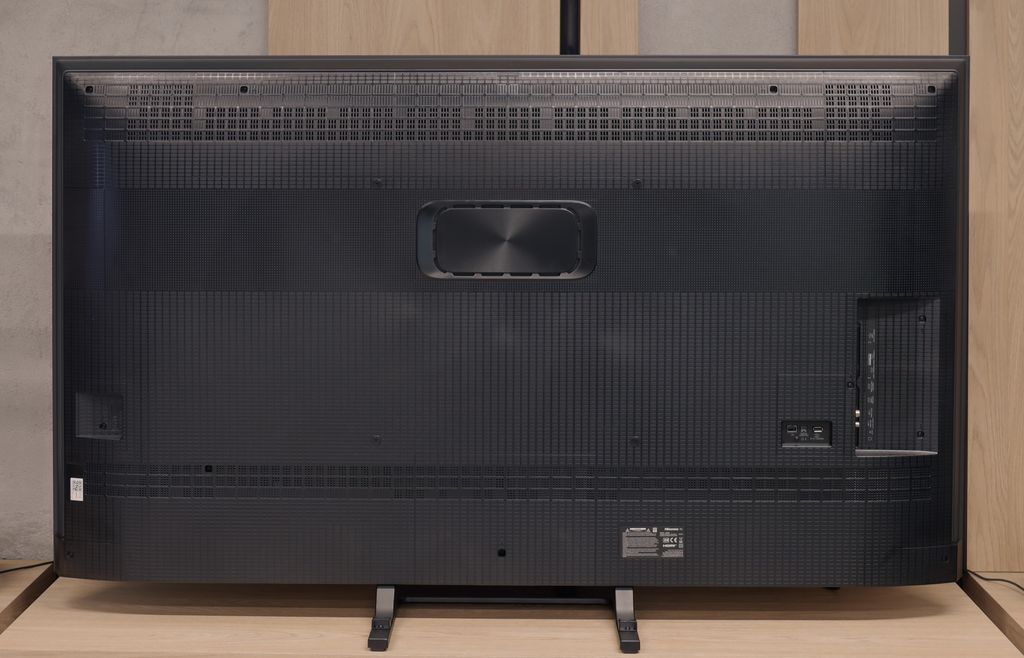
Contrast and black detail
7.7/10
7.6/10
Local dimming function: Yes, number of zones: 720 (36 x 20)
Local dimming function: Yes, number of zones: 220 (10 x 22)
Contrast:

Result
∞:1

Result
30,150:1

Result
17,500:1

Result
9,500:1

Result
5,750:1

Result
277,000:1

Result
43,700:1

Result
15,750:1

Result
8,850:1

Result
6,350:1
Halo effect and black detail visibility:

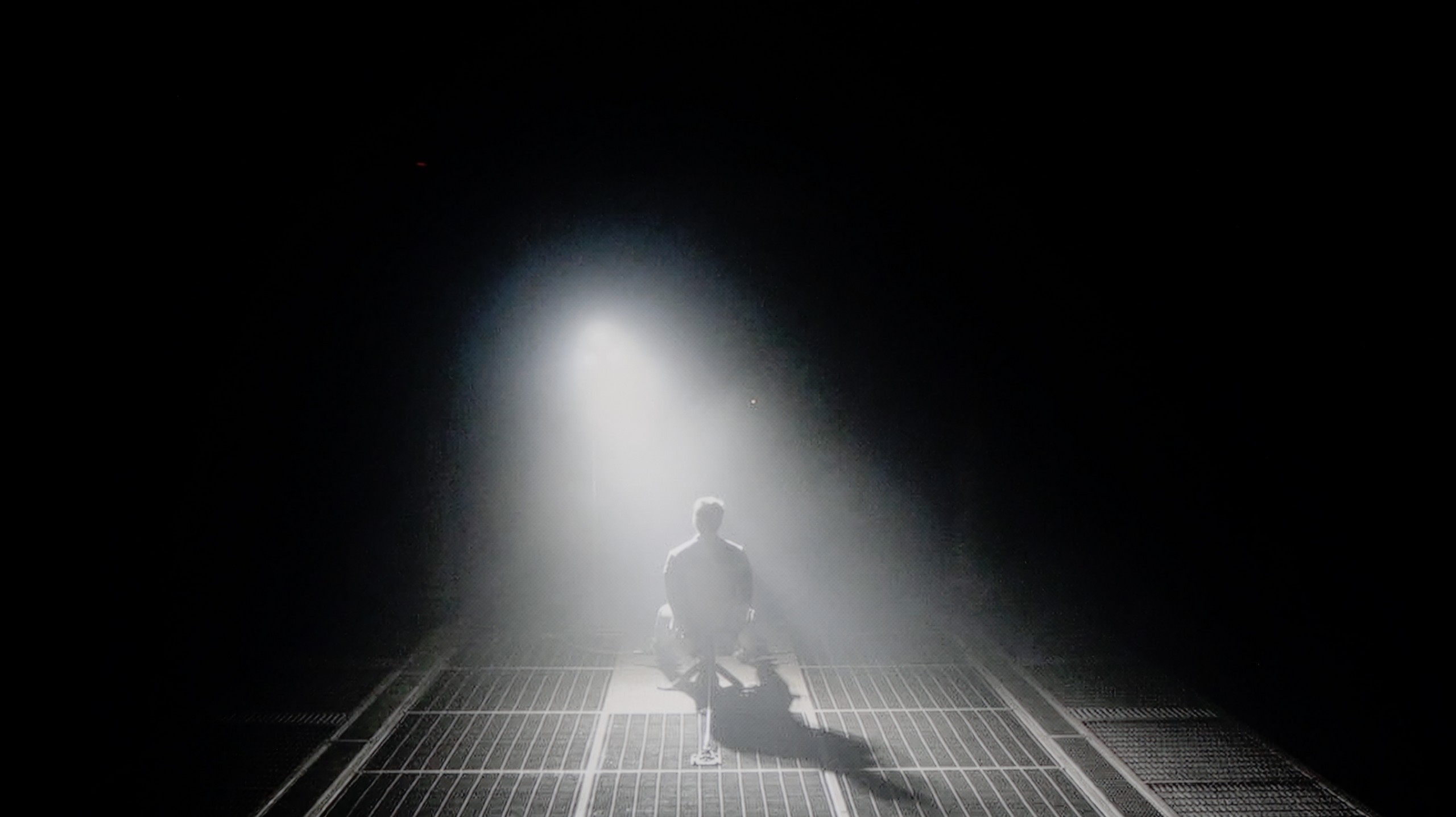
TCL MQLED85/C765 stands out with its use of a VA panel and Mini LED backlighting, which makes a huge difference compared to traditional backlighting systems. Mini LED, thanks to significantly smaller diodes, allows for more precise control of the screen's backlighting, resulting in much better contrast and deeper blacks. The 55-inch model we are testing boasts an impressive number of over 700 local dimming zones, providing exceptional precision in displaying images. It is worth noting that the number of backlighting zones may vary depending on the screen size - for larger diagonals, the number of zones naturally increases due to the larger screen area, allowing larger sizes to achieve better results in terms of contrast and black levels. Thanks to the vast number of zones, the TCL MQLED85/C765 achieved a result comparable to OLED screens on our first test slide from the movie "Oblivion," offering nearly reference-level contrast. But what will happen when we test this model in even more demanding conditions? How will the TV perform in tougher scenarios? Overall, the TCL MQLED85/C765 performs very well in displaying blacks, but in some cases, the local dimming algorithm is not perfect. On dark backgrounds, smaller bright elements can lose sharpness and brightness, as confirmed by our recent slide from the Pioneer Kuro test disc. Despite some imperfections in the local dimming algorithm and the slight presence of the HALO effect (a bright halo around bright objects on a dark background caused by imperfections in the screen's local dimming), the results achieved by the TCL MQLED85/C765 are impressive, especially considering its price. This TV offers contrast and black depth that can compete with models that are even half again as expensive.
Similarly to the U7Q, the E8Q model uses a VA panel and Mini-LED backlighting. The number of dimming zones also remains at a very similar level – in the 65-inch variant we tested, we counted 220 zones, which is exactly the same as in the U7Q. On paper, this looks really good for this price segment, but even better – in practice. The contrast is high, and black can be really deep. In many scenes, the lights are clearly separated, and the image gains in spaciousness. This is one of those cases where Mini-LED shows it can approach the quality of OLEDs – provided that we are aware of the limitations we need to consider. In very difficult scenes, there may be slight lightening or minor halo effects around bright objects, but these are phenomena typical of this technology and are not very noticeable. Ultimately – the contrast and blacks in the E8Q are really solid, almost identical to those in the U7Q model. It’s hard to find fault with this, especially when we look at the price of the television.
HDR effect quality
6/10
4.5/10
Luminance measurements in HDR:

Result
1016 nit

Result
365 nit

Result
765 nit

Result
235 nit

Result
1178 nit

Result
531 nit

Result
148 nit

Result
320 nit

Result
100 nit

Result
625 nit
Scene from the movie “Pan” (about 2800 nits)

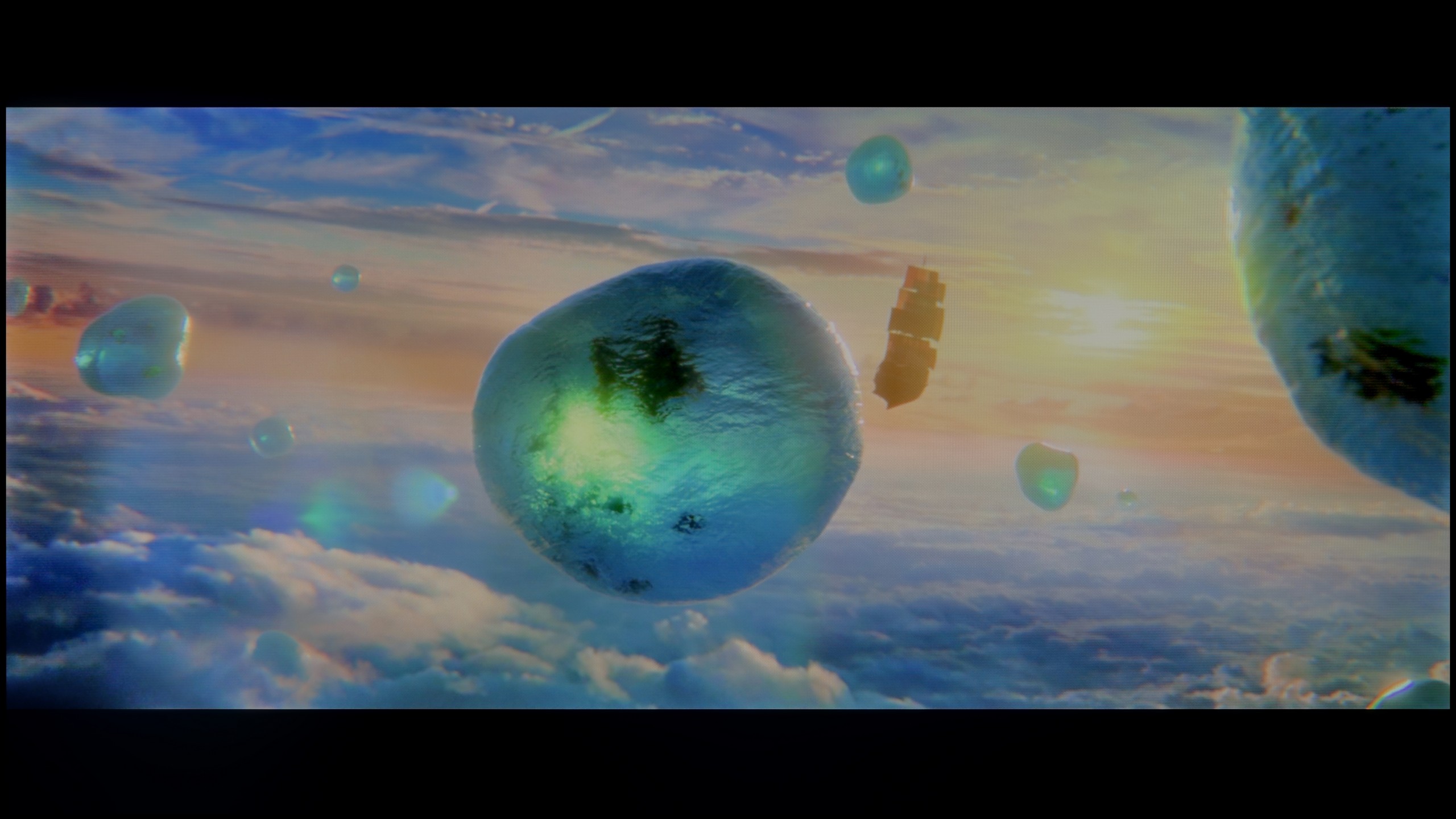
Scene from the movie “Billy Lynn” (about 1100 nits)

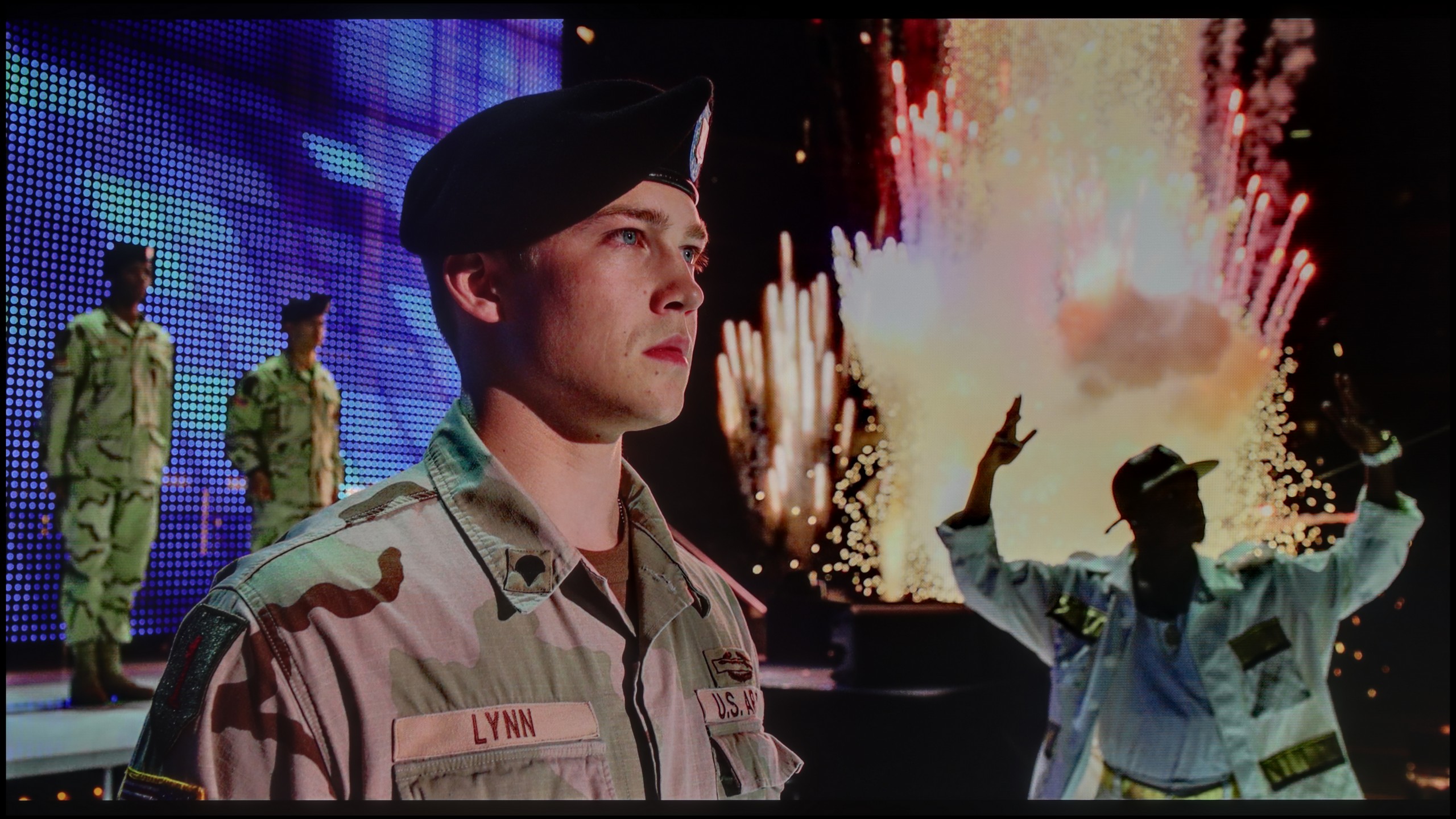
Static HDR10


Dynamic: Dolby Vision
Dynamic: Dolby Vision


HDR luminance chart:
Hisense E8Q
Luminancja HDR
Luminance of RGB colors
TCL MQLED85 / C765
Luminancja HDR
Luminance of RGB colors
The TCL MQLED85/C765 television performs well with HDR handling. In the tested movie scenes, where the screen is covered at 100% brightness, the model achieves impressive results around 1000 nits, providing intense and realistic representation of HDR content. However, similar to contrast, the dimming algorithm may show some limitations. Despite the large number of Mini LED zones, the television does not always manage to "stun" the user with brightness in very challenging test scenes. For example, in a scene from "Life of Pi," where a bright moon appears against a dark background, and in another scene from "Sicario 2," where a very bright light effect is visible against a dark background, the television did not reach maximum intensity. For users expecting perfect HDR performance in such extreme cases, the TCL MQLED may be slightly disappointing. However, regarding colors, the television stands out with a very high color gamut coverage of DCI P3 at 95%, which is an impressive result comparable to much more expensive models. The TCL MQLED85 / C765 offers support for various HDR formats, including Dolby Vision and HDR10+, which is essential for cinema image enthusiasts. Although this model achieves brightness over 1000 nits, the TCL MQLED85 may struggle to reflect details in very high contrast scenes. For better HDR quality control, the C765 is equipped with dynamic tone mapping, making the image more realistic and natural depending on the content.
Since the E8Q is a twin of the U7Q, it’s no surprise that the quality of the HDR effect is almost identical. On paper, it looks promising – a peak brightness of 800 nits can impress in many scenes. Fragments like the flashes of light in “The Meg” or shots of the sun in “Life of Pi” can indeed evoke a “wow” effect. But the longer we watch, the more we notice the limitations. The problem arises when small, bright details are supposed to be displayed on a dark background. In such situations, the dimming algorithms try to preserve contrast but end up dimming what should shine the brightest. Instead of dazzling details, we get almost invisible points of light. This is typical for Mini-LED in this price segment and is not surprising – but it’s worth knowing that the HDR effect won't always be fully preserved. Fortunately, the color reproduction offers reasons to be satisfied. A coverage of the DCI-P3 color gamut at around 94% is a very good result, and the applied quantum dot layer (more specifically, PFS) does its job – colors are saturated and vibrant, especially with 4K content.
Factory color reproduction
5.2/10
6.5/10


Factory Mode
After calibration
TheTCL MQLED85/C765 television was tested in movie mode, which, although it seems to be the best setting from the manufacturer, is not without flaws. The color reproduction in HD/SDR mode MQLED85 shows certain shortcomings. In the analysis of white balance, there is a significant lack of blue color, which can affect the overall picture quality, especially in bright scenes where blue hues are crucial for natural representation. The overall image may then seem too warm. As for gamma contrast, the graph shows a significant jump above the reference line of level 2.4 at the beginning, which may suggest significant dimming of brightness in darker areas, leading to a loss of detail in blacks. Then, for most of the time, the values are below this line, which can lead to a loss of detail in the brighter parts of the image. Such a distribution can negatively affect the perceived image quality, especially when watching regular HD television.
In the case of 4K HDR image quality of the TCL MQLED85/C765, there is a noticeable excess of red color in the analysis of white balance. Such an excess can significantly affect the viewer's experience, leading to several significant effects. First of all, too much red can make other colors, such as green or blue, appear muted or unnatural. This distortion of color balance can result in an overall impression of "oversaturation," which detracts from the image's naturalness and authenticity. Regarding contrast, the EOTF (Electro-Optical Transfer Function) graph indicates that most values are above the reference line, suggesting an intense boost in brightness in the bright areas of the image. However, the exception is the beginning of the graph, where the EOTF line is below the reference one, which may lead to excessive dimming of small light elements.
Users should be aware that despite using the best mode, which is movie mode, the television is not free from flaws in the context of picture settings, so it is worth considering adjusting the settings to achieve better results.
Testing the Hisense E8Q in Filmmaker mode, we were hoping for a neutral image close to the director's vision. Unfortunately - although on paper it doesn't look bad (the color reproduction errors are not significant), in practice the image feels somewhat unnatural. The reason? Too strong an increase in blue and a lack of red in the white balance. The effect? The scenes look cool, and the white appears slightly bluish. Alongside the U7Q model, we also noticed a specific approach to brightness management here. The brightness reproduction curve for HDR content (EOTF) shows that the TV can significantly dim small, bright elements of the screen to maintain contrast - but sometimes it goes too far. On the other hand, it can excessively brighten larger, very bright parts, which disrupts tonal balance. This is a compromise that may not suit everyone – especially if you want an as faithful image as possible right out of the box.
Color reproduction after calibration
7.8/10
7.4/10



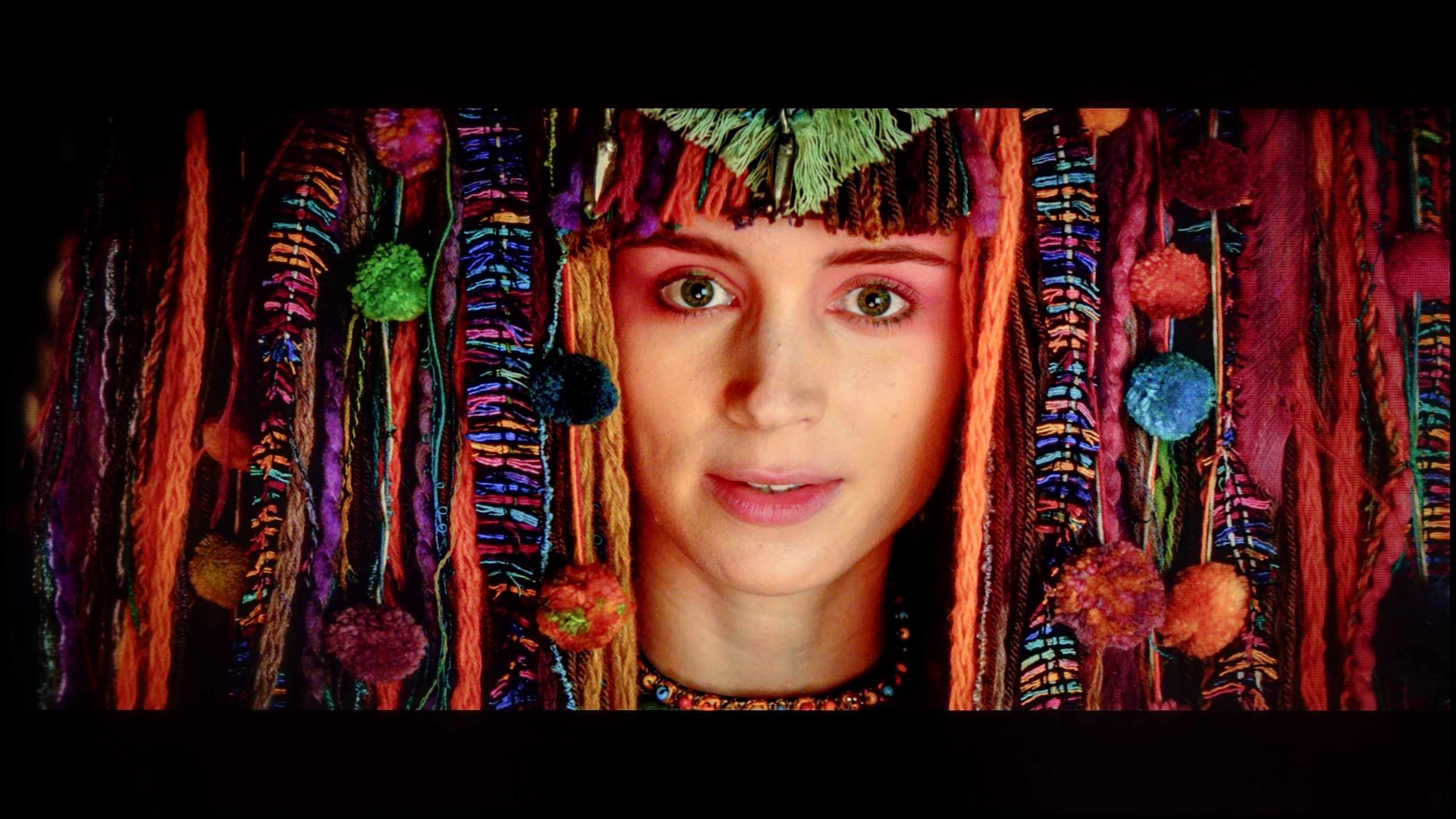
After professional calibration of the TCL MQLED85/C765 television, its color properties in movie mode have significantly improved, resulting in much more satisfying visual experiences. Both in SDR and HDR modes, the white balance shows no serious errors, and the graph appears much better harmonized. Users can now enjoy natural color reproduction, which is essential for achieving an authentic experience while watching movies. It is worth noting that in HDR content, there may be minor color reproduction errors at the end of the graph, but they are significantly smaller than before calibration. This makes characters and landscapes more realistic, enhancing the depth of immersion in the story.
Regarding contrast, the gamma curve, responsible for HD quality, has been completely free of drops below the reference line, which means better detail visibility in dark scenes. However, there is still a slight boost at the beginning of the graph, which may affect the perception of bright elements. For HDR content, the EOTF curve also shows smaller errors, although certain issues in reproducing midtones may still be noticeable. The EOTF curve measured on real film scenes still shows a significant brightness boost, making the image appear more intense but artificially brightened. This is a typical issue for TCL brand televisions, which may appeal to untrained viewers but can be annoying for those more familiar with the ideal picture.
What benefits does professional calibration bring for movie enthusiasts? Thanks to it, watching becomes even more realistic and immersive, allowing every scene to be experienced fully, maintaining details and natural colors.
The calibration of the Movie mode brought really good results, especially regarding SDR content. The white balance was successfully adjusted, which gave the image a natural look – it appeared almost reference-level. The colors were well-saturated, and the overall perception of the content improved significantly. Unfortunately, when we moved to HDR materials, the well-known problems from the U7Q model returned. The TV still tends to “do things its own way,” which is evident from the analysis of the EOTF brightness characteristic – despite calibration, the E8Q still dimmed small details in the shadows, while the bright areas of the screen could sometimes be excessively boosted. In practice, this means that in darker scenes, some of the tiniest details could simply disappear. Although it must be admitted that the entire calibration process brought a lot of good, not everything can be circumvented – even with the use of professional tools. The E8Q can impress with its picture, but in HDR content, its design limitations become noticeable, and it is worth keeping this in mind.
Smoothness of tonal transitions
7/10
9.9/10





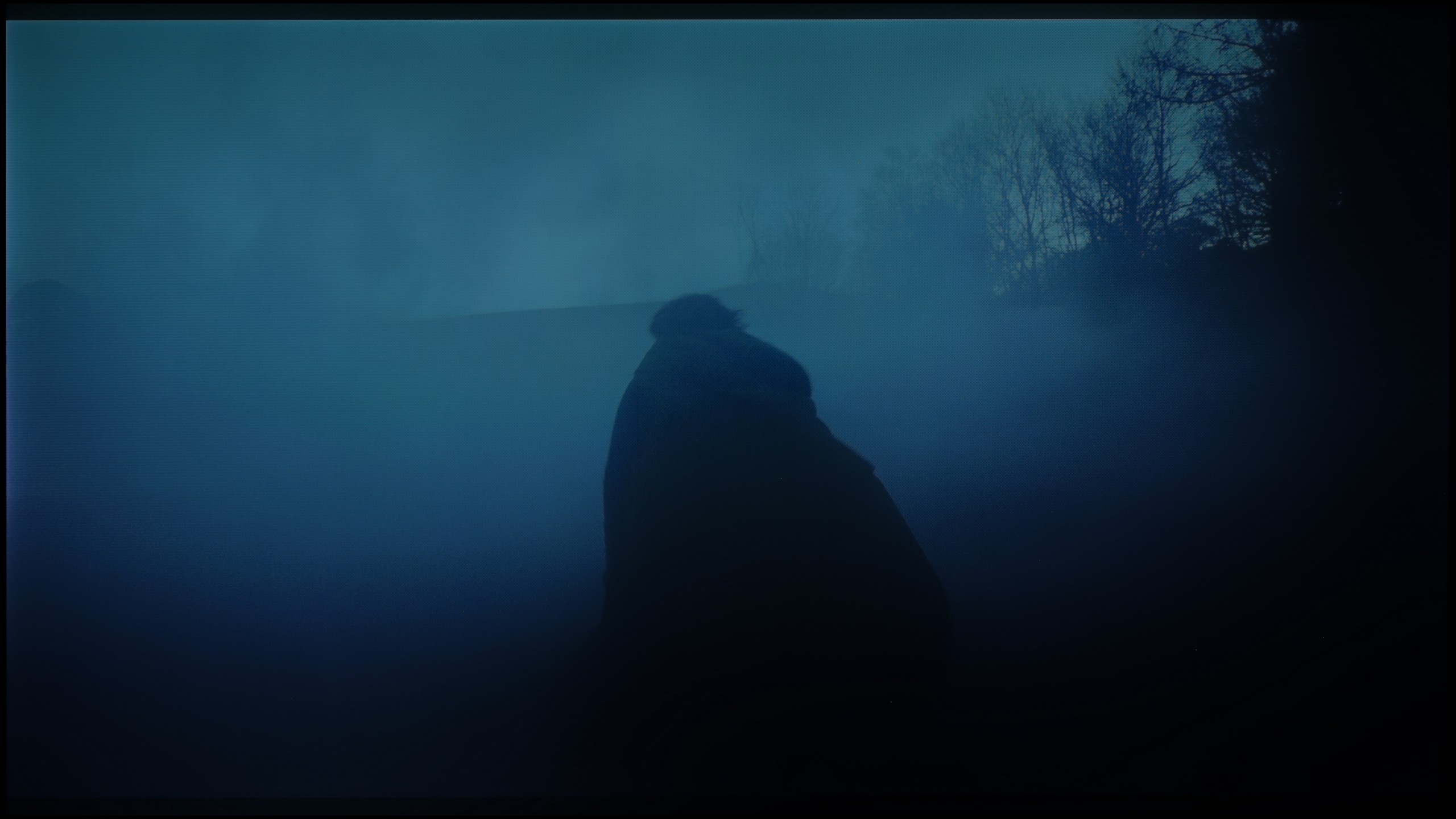

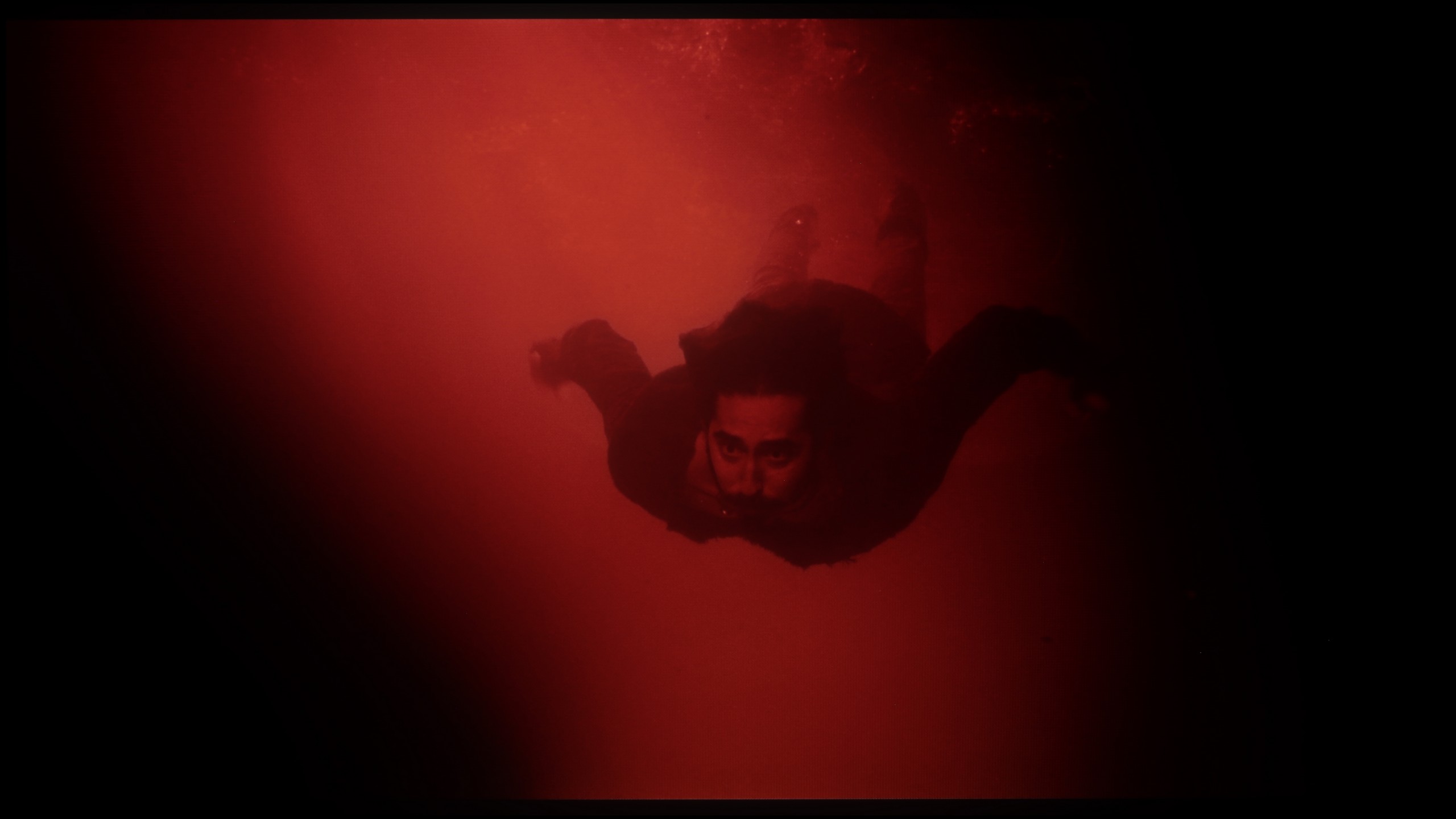




The fluidity of tonal transitions in the TCL MQLED85/C765 television is decent, although certain issues are noticeable in both bright and dark test scenes. In particular, color transitions are visible in a scene from the movie "The Green Knight," where the red color of the water transitions to black. Despite these imperfections, the overall quality of gradation is acceptable and does not overly spoil the visual experience. The television handles most scenes well, offering satisfying tonal transitions, which contributes to an overall enjoyable visual experience that will not ruin our cinematic impressions.
In this category, the Hisense E8Q truly shows its class. The transitions between colors are very smooth, with no "banding" or clear boundaries between tones. The image looks natural, and the color gradient is exceptionally well-executed – even in more difficult scenes. If there are any minor imperfections, they are subtle enough that they don't stand out. It's hard to find fault here – it looks almost exemplary.
Image scaling and smoothness of tonal transitions
5.1/10
6/10
Smooth transition function


Image without overscan on the SD signal


We will now take another look at the tone transitions in the TCL MQLED85/C765 television, but in the context of poorer image quality. Despite the presence of the "Gradual Smoothing" option, when set to "low," the effects are practically invisible, disappointing users expecting an improvement in image quality. On the other hand, setting it to "high" brings minimal results, and worse, it can blur significant details, negatively affecting the sharpness and clarity of the displayed image. However, in terms of image scaling, the television successfully displayed the image without overscan, which means we do not lose any part of the view. The image looks quite decent, and details such as tree branches or the outlines of models do not show significant fraying, which positively influences the visual quality.
In the case of older materials with lower quality, a gentle smoothing of tonal transitions is often useful. The Hisense E8Q, like the U7Q, has the "Smooth and Gradient Picture" feature, but unfortunately, its effectiveness leaves much to be desired. The “Low” setting is almost imperceptible in operation, while higher settings simply blur details instead of improving transitions. The good news is that the feature does not compromise the film grain, which allows it to maintain the image structure. On the plus side, the scaling is commendable. The television can fairly sensibly transform older content to a higher resolution—without artificially emphasizing contours or excessive sharpening. Though it does not match the best models in this category, it performs quite well for its class.
Blur and motion smoothness
7.5/10
7.5/10


Blur (native resolution, maximum refresh rate):



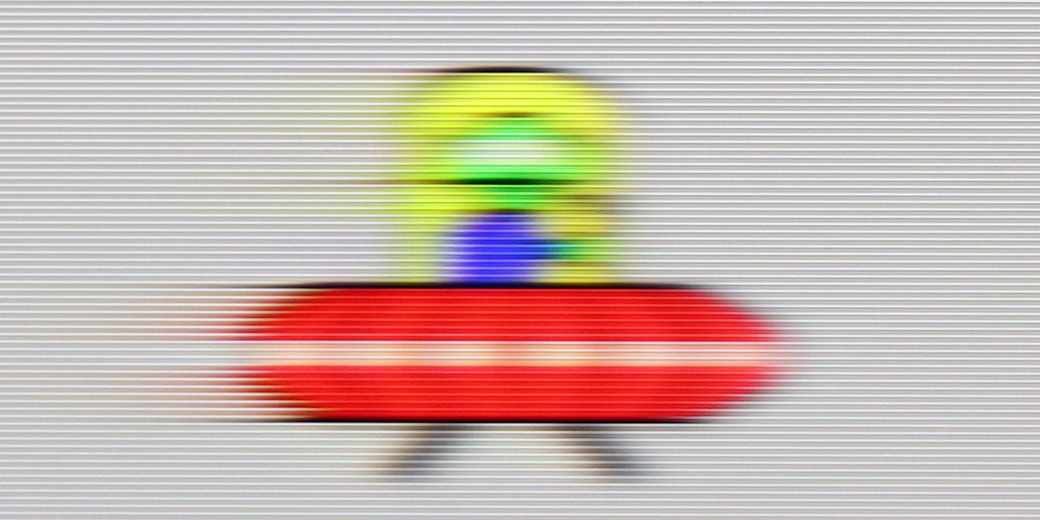
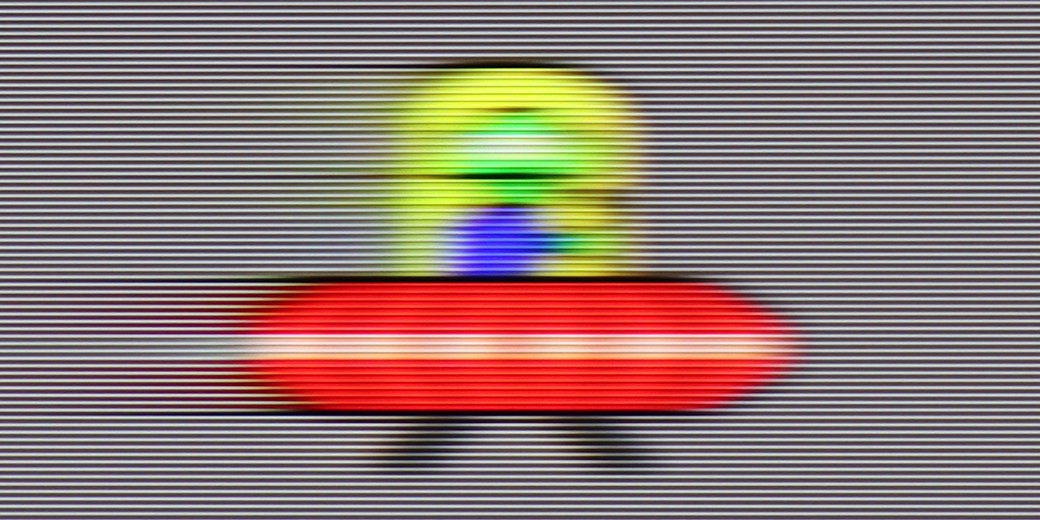
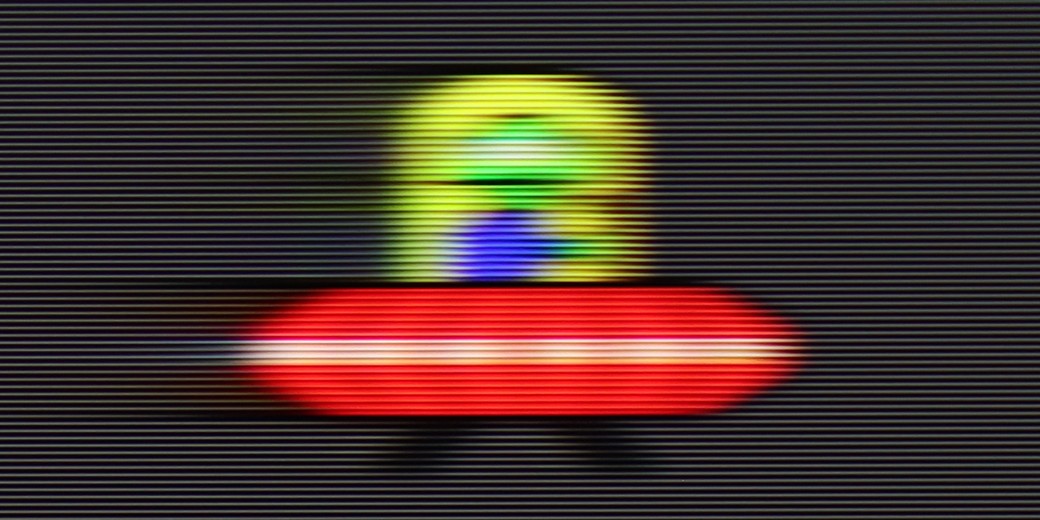
Blur (BFI function enabled):





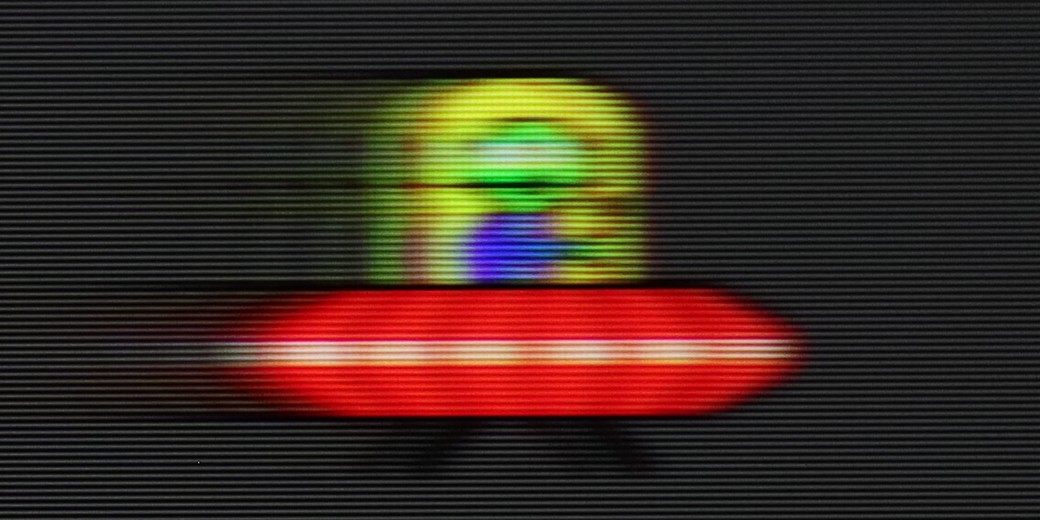
Smużenie ():
Smużenie (4K 120Hz):
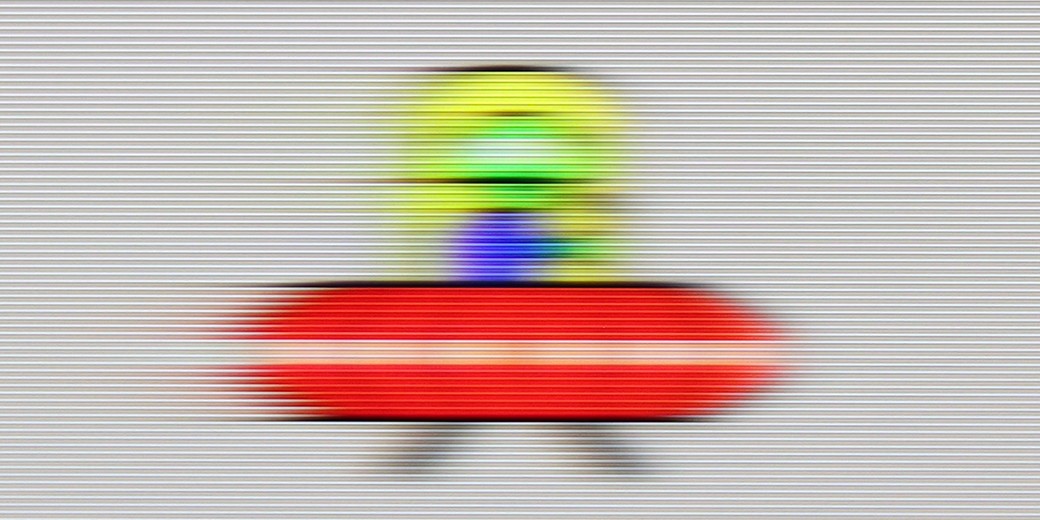
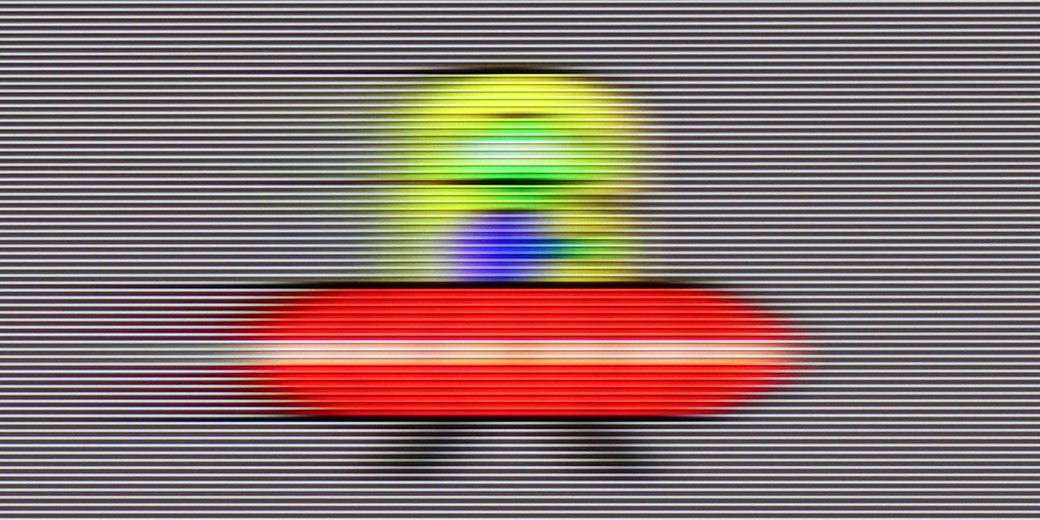
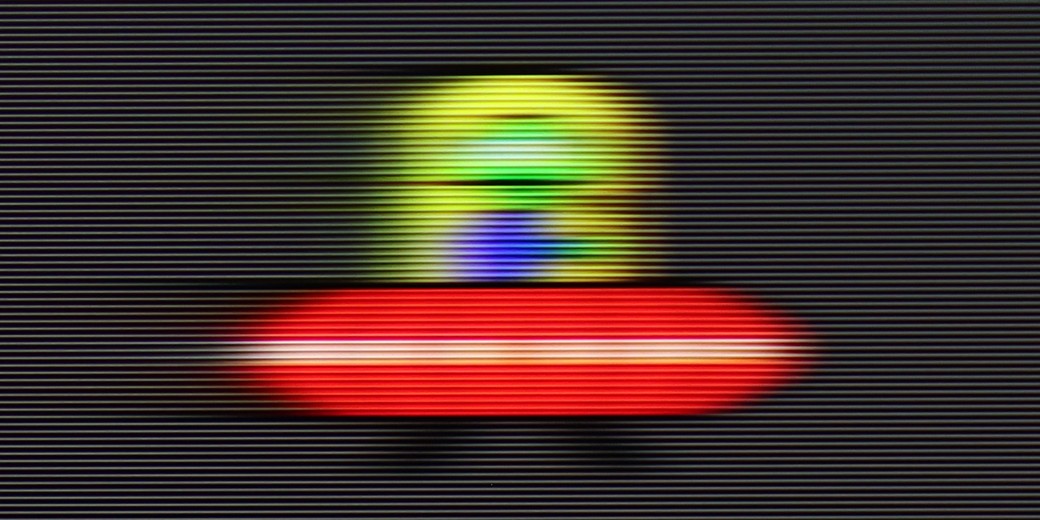
TCL MQLED85/C765 is equipped with a standard refresh rate matrix of 120 Hz, with the possibility of increasing it to 144 Hz when connected to a powerful computer. The television also offers a multi-stage motion smoother, which mainly serves users who want to improve motion smoothness in films. It allows for the adjustment of the effect's intensity on a scale from 0 to 10, enabling precise matching of image smoothness to individual preferences. The matrix's response time is decent but not perfect. We can observe ghosting occurring behind both dark and medium objects.
Like the U7Q, the E8Q model is a fast television designed for dynamic content. It supports 144 Hz refresh rates in 4K resolution, and if for some reason someone is still gaming in Full HD, it can achieve even 240 Hz. This is a significant advantage, especially for PC users looking for maximum fluidity. In everyday use, the television performs very well. The "Ultra Motion Smoothness" mode provides us with two sliders, allowing for personalized image settings – whether it’s more cinematic with preserved film frames or heavily smoothed, almost "series-like." It’s good that the manufacturer gives a choice here instead of imposing one style. On sports materials, live broadcasts, or in games – motion appears clean and stable. Sure, it’s not at the level of OLEDs, but for this price range, the E8Q performs really well.
Console compatibility and gaming features
9.8/10
8.5/10
- ALLM
- VRR
- VRR range48 - 144Hz48 - 240Hz
- Dolby Vision Game Mode
- Correct implementation of HGIG
- 1080p@120Hz
- 1440p@120Hz
- 4K@120Hz
- Game bar



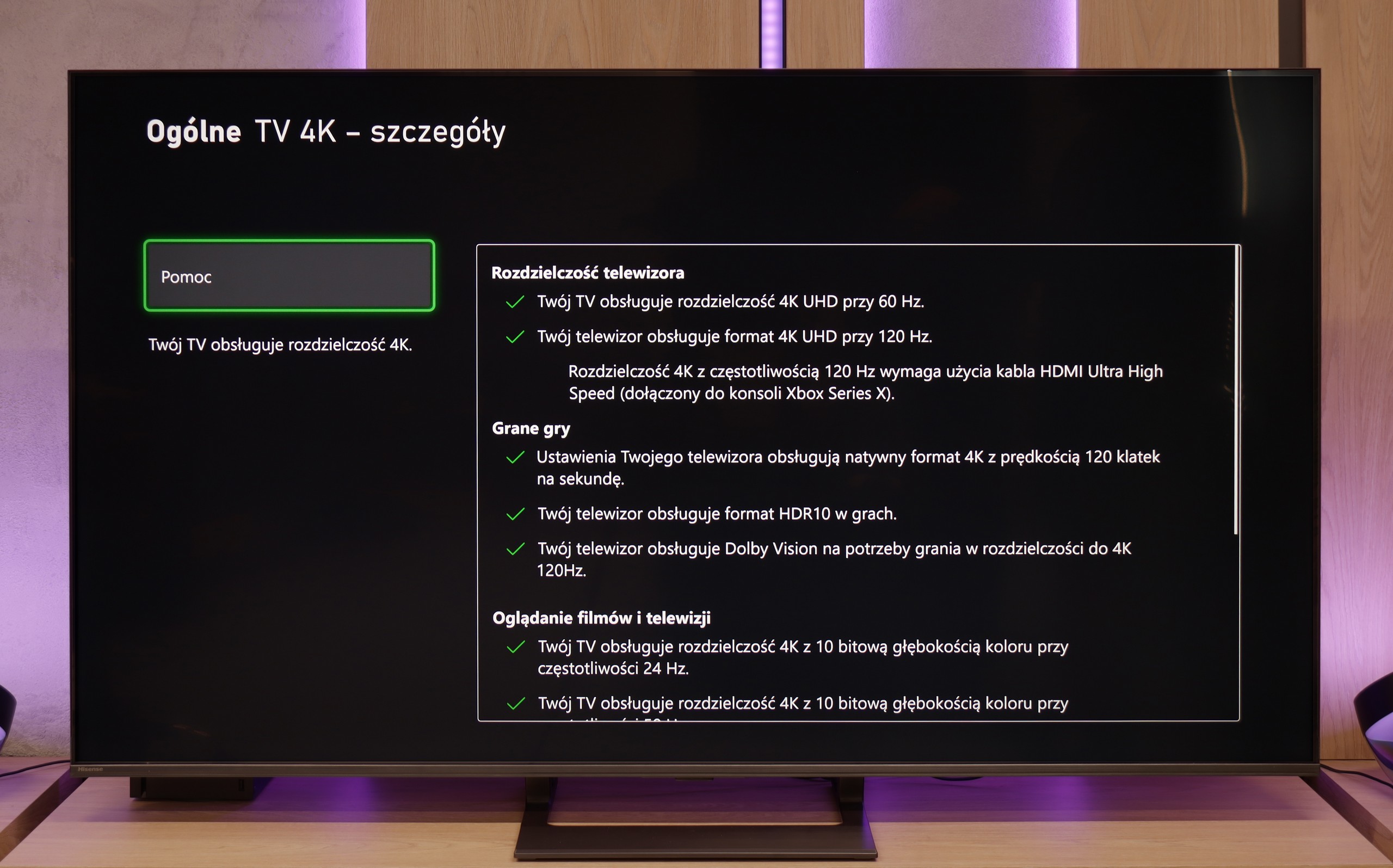

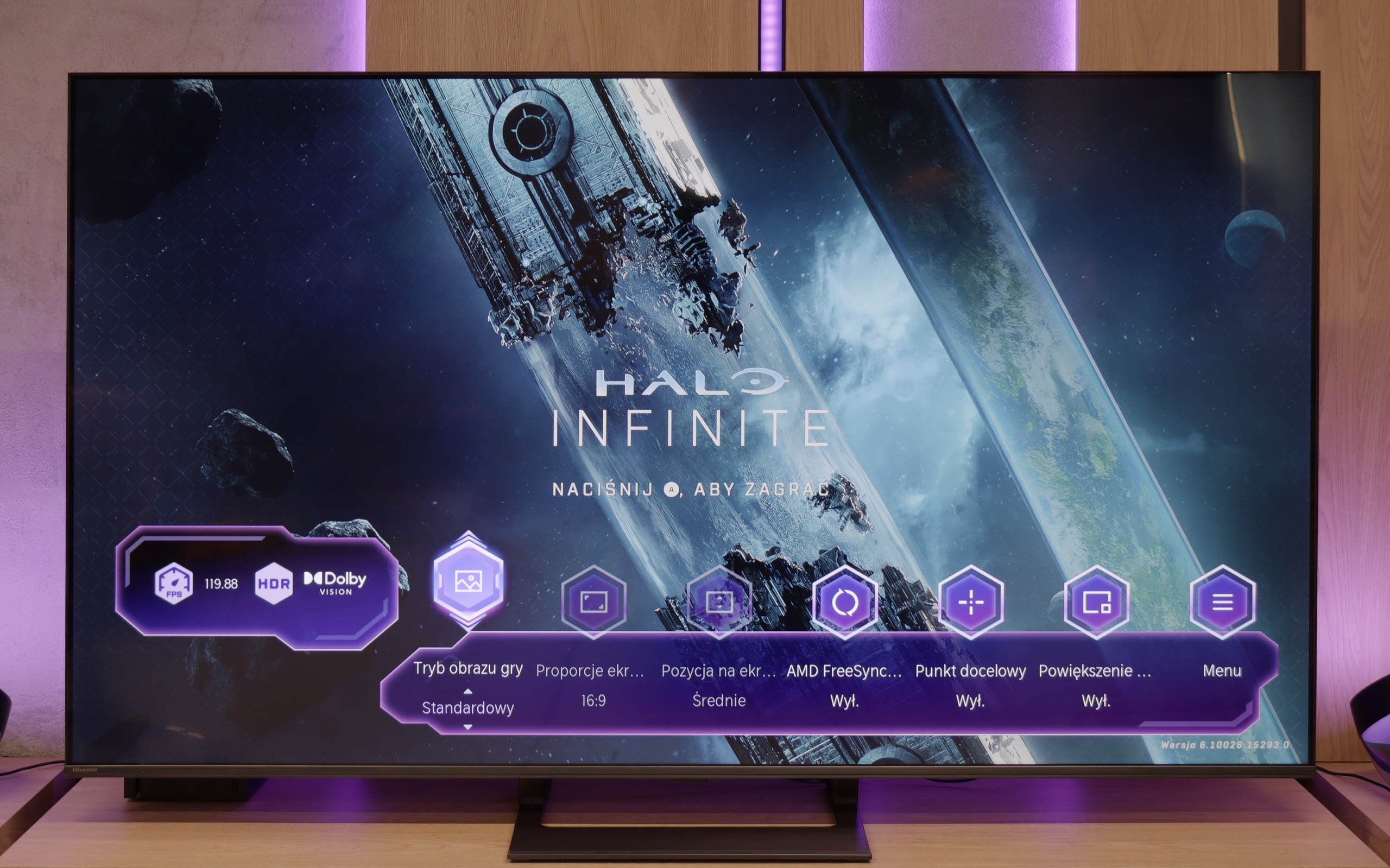


TCL MQLED85/C765 has received an impressive rating in the gaming features category, making it an excellent choice for gaming enthusiasts. The television supports all the latest technologies that significantly enhance the gaming experience. Among the key gaming features is ALLM (Auto Low Latency Mode), which automatically switches the television to low latency mode, minimizing response time and ensuring smooth gameplay. VRR (Variable Refresh Rate) supported in the range from 48 to 144 Hz eliminates stuttering and screen tearing in dynamic gaming scenes. Additionally, the television supports Dolby Vision Game Mode, which provides better image quality in games with exceptional color depth and contrast. TCL MQLED85/C765 also features a decent but not the best implementation of HGiG (HDR Gaming Interest Group), optimizing HDR game display, but in the case of TCL, it causes bright details in white, resulting in some elements blending into a white spot - we can read more about this in the color reproduction section. It supports various resolutions such as 1080p@120Hz, 1440p@120Hz, and 4K@120Hz, allowing gamers to take advantage of higher image quality and better fluidity. The Game Bar feature allows for easy switching between game settings and quick control of parameters, significantly facilitating the adjustment of the television to individual needs. With support for G-Sync and FreeSync technologies, users of NVIDIA and AMD graphics cards will be pleased with the synchronization of refresh rates, eliminating tearing and stuttering issues, providing a smoother and more immersive gameplay experience.
MQLED85/C765 is a television that combines advanced technologies and excellent support for gamers, making it an ideal choice for those who want to maximize their gaming experiences.
The Hisense E8Q does not hide its gaming pedigree. The specification alone reveals that we are dealing with a television that will work great as a gaming screen. Variable Refresh Rate (VRR)? Yes. Automatic low latency mode (ALLM)? It's there too. Additionally, there is impressive refreshment – 120 Hz in 4K or even 240 Hz in Full HD. Such a set is rare in this price segment. Everything works smoothly and without major surprises. The only missing element – like in the U7Q – remains support for HGiG. It's a pity, because this feature makes it easier to match the brightness curve to the capabilities of a particular television, improving visual consistency with the intentions of HDR game creators. Without it, one has to manually tweak the settings, which does not always yield a satisfying result.
Input lag
9.8/10
9.7/10
SDR
HDR
Dolby Vision
Input lag on the TCL MQLED85 television reaches impressively low levels under any conditions. Even the most demanding gamers will surely appreciate the minimal input lag of only 8 ms at 4K 120 Hz settings with HDR. Moreover, the delays remain at the same level even with Dolby Vision HDR turned on, which is not the case with many competitive models.
The E8Q handles delays very well. For 120 Hz content, the input lag is super low – practically unnoticeable even for more demanding gamers. At 60 Hz, the values are a bit higher, but still comfortably within the "placebo" range – there's nothing to complain about. The biggest increase in lag was noted in Dolby Vision Gaming mode. The TV needs more time to process the signal in this mode, but even then, it does not exceed 30 ms. While these may not be perfect values, they won't pose any obstacles for most gamers – especially console gamers.
Compatibility with PC
8.6/10
8.6/10


TCL MQLED85 performs well as a computer monitor. Thanks to 4:4:4 chroma support, text on the screen is clear and readable, which is important for people working with text documents or spreadsheets. One of the greatest advantages of this model is its exceptionally low input lag in "PC" mode, which is only 8 ms. This is a reference-level result that ensures smoothness and responsiveness, crucial for both gamers and those engaged in video editing. However, it is worth noting that there is a certain issue related to font display on dark backgrounds. When zooming in on the tested font image, it can be seen that horizontal lines are darker compared to vertical ones. This means that the sub-pixels in the television do not fully illuminate in this case, which can affect the quality of the displayed text. Nevertheless, the overall performance of TCL MQLED85 as a computer monitor is very good and will certainly meet the expectations of many users.
In terms of collaboration with the computer, the E8Q performs really well. It supports chroma 4:4:4 at full 4K resolution and at the highest refresh rate, so the readability of fonts – even the smallest ones – is at a very good level. There are minor blurriness issues with exceptionally thin fonts, but in everyday use, this is hard to consider a serious problem. A nice addition for PC gamers is the ability to achieve up to 288 Hz at lower resolutions. The E8Q communicates effortlessly with powerful graphics cards, making it an interesting choice not only for movies or consoles but also for gaming on a computer.
Viewing angles
3.2/10
3/10
The viewing angles on the TCL MQLED85 television are not its strongest point. The use of a VA panel means that the picture loses a significant amount of brightness when viewed at an angle. When the viewer's position changes, especially when watching with a larger group, colors may appear less saturated, and the contrast may be less pronounced. For this reason, it is recommended to sit directly in front of the screen to fully enjoy the picture quality. Although the television offers excellent color reproduction from a direct view, the loss of brightness and detail at an angle can be problematic for those planning to use the TV in a larger room or from various positions.
E8Q, like most TVs with a VA panel, looks best when we sit directly in front of the screen. In this position, one can count on deep blacks, good color saturation, and high contrast. Unfortunately, just moving slightly to the side causes the picture quality to suffer – colors start to fade, and blacks become more gray than black. This isn't surprising, but it's worth keeping in mind, especially if we plan to watch in a larger group from different positions in the living room. As a consolation – in return, we get significantly better black levels than with IPS panels.
TV efficiency during daytime
6.3/10
6.2/10



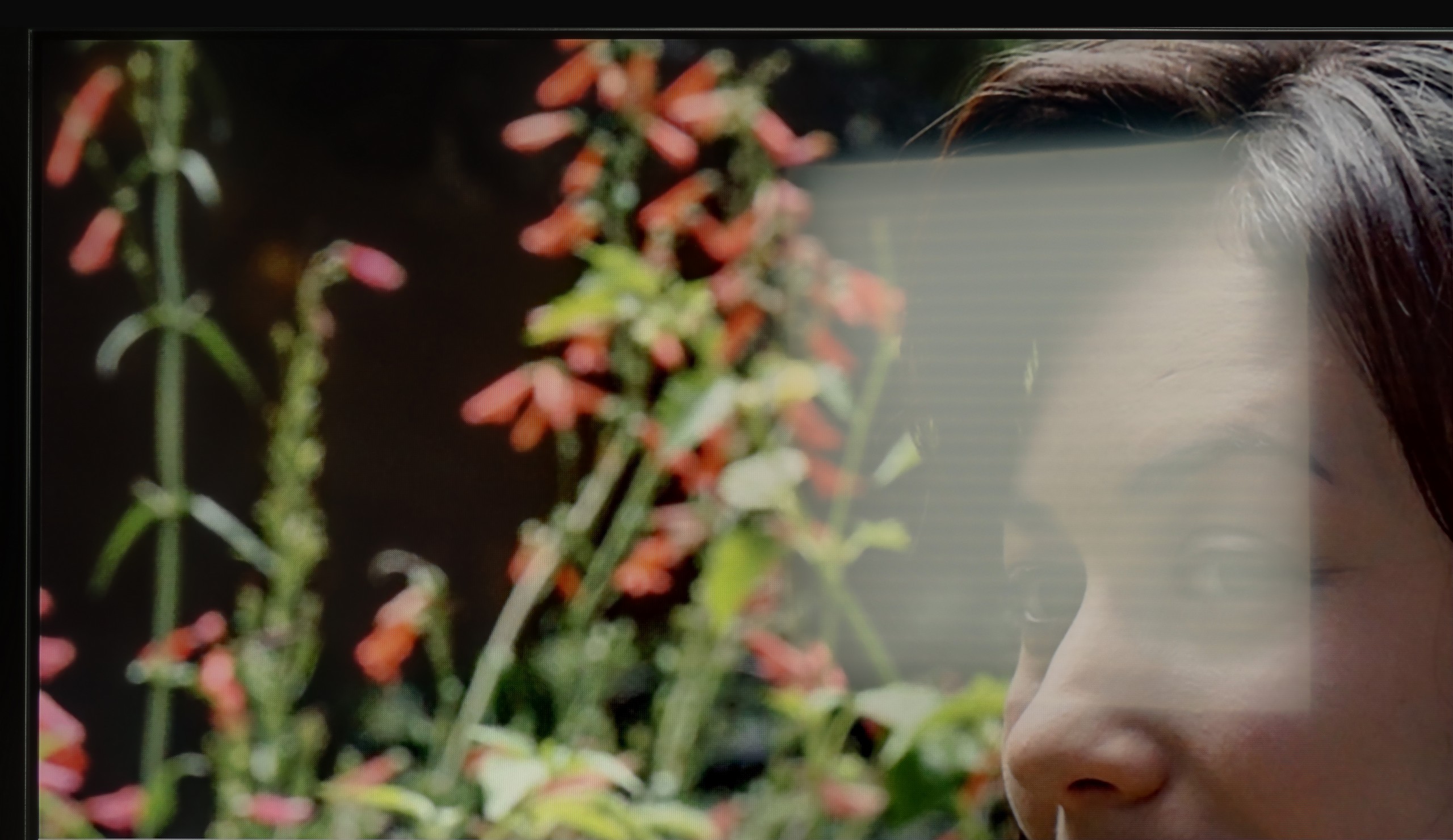
Matrix brightness
Average luminance SDR
Hisense E8Q: 504 cd/m2
TCL MQLED85 / C765: 618 cd/m2
MQLED85 performs decently in daylight conditions, and it's worth noting the satin finish of the panel. Although it doesn't excel at reducing reflections, it offers satisfactory performance in various lighting conditions. An average brightness level above 600 nits is an impressive result, allowing for comfortable viewing even in well-lit rooms. As a result, the television works well both during the day and for evening movie sessions, providing satisfactory image quality.
The Hisense E8Q is not afraid of bright interiors. Even when the full sun is shining outside, the television can maintain good image clarity. A brightness level of around 500 nits ensures that you can comfortably watch content during the day, without feeling that everything is drowning in glare. The satin screen coating also helps to pleasantly reduce reflections – it doesn't eliminate them completely, but limits them enough that they don't interfere with everyday viewing.
Details about the matrix
Subpixel Structure:

Panel uniformity:

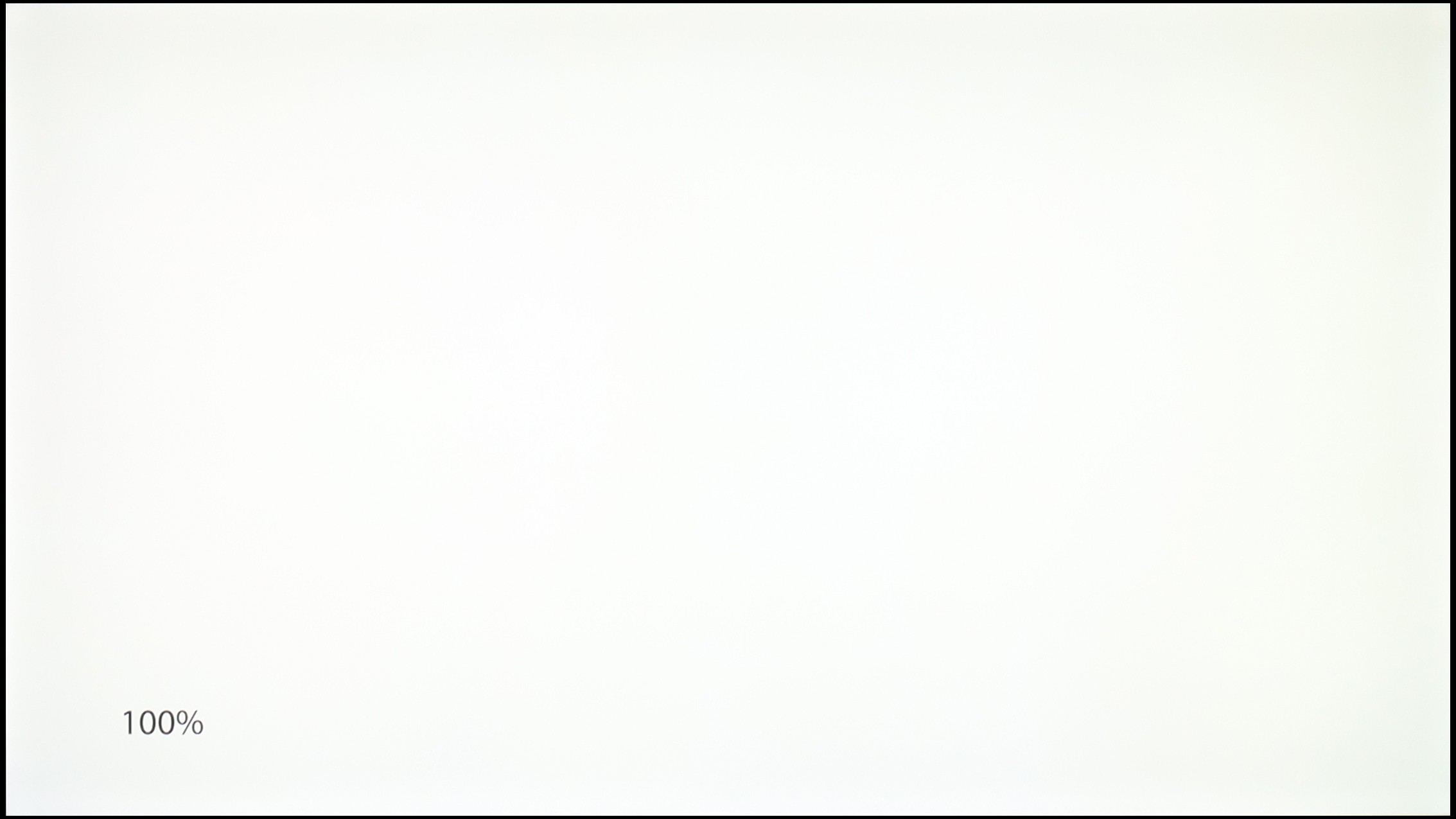
TCL MQLED85 / C765
Hisense E8Q
TV features
7.1/10
8.9/10
- HDMI inputs2 x HDMI 2.0, 2 x HDMI 2.1 48Gbps2 x HDMI 2.0, 2 x HDMI 2.1 48Gbps
- Other inputsRCA (Chinch)RCA (Chinch)
- OutputsToslink (Optical audio), eARC (HDMI), ARC (HDMI)Toslink (Optical audio), eARC (HDMI), ARC (HDMI), Mini-Jack (Headphones)
- Network InterfacesWi-Fi 2.4GHz, Wi-Fi 5GHz, Ethernet (LAN) 100MbpsWi-Fi 2.4GHz, Wi-Fi 5GHz, Ethernet (LAN) 100Mbps
- TV receptionDVB-T, DVB-T2, DVB-S, DVB-S2, DVB-CDVB-T, DVB-T2, DVB-S, DVB-S2, DVB-C
Classic features:
- Recording to USB (terrestrial TV)
- Recording programming
- Picture in Picture (PiP)
- RF remote control (no need to aim at the screen)
- Backlit remote control
- Teletext
- Audio only mode
- Possibility to connect Bluetooth headphones to the TV
- Possibility to simultaneously use Bluetooth headphones and the TV speaker
Smart features:
- AirPlay
- Screen mirroring (Windows Miracast)
- Wyszukiwanie głosowe
- Voice search in native language
- Ability to connect a keyboard and mouse


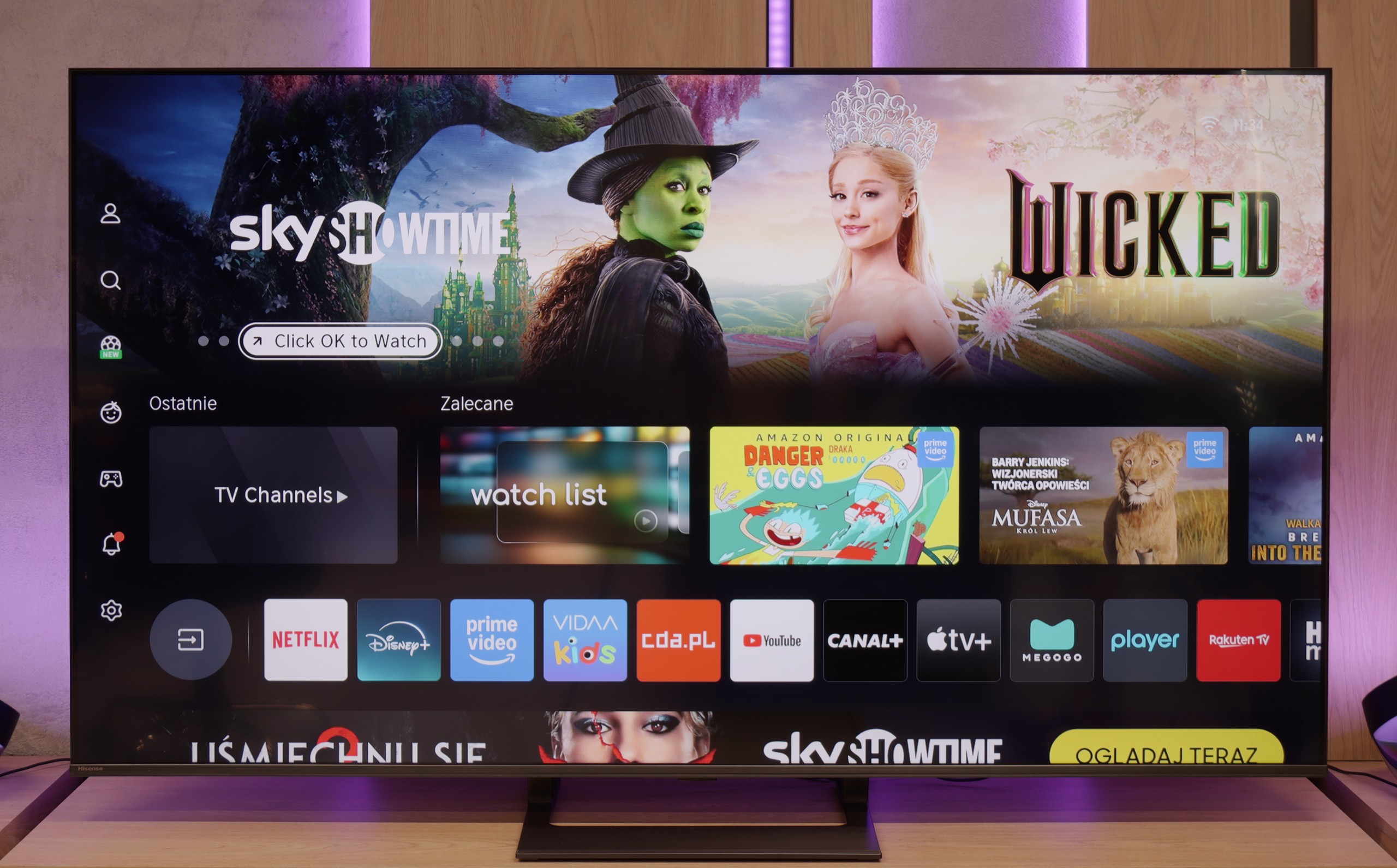
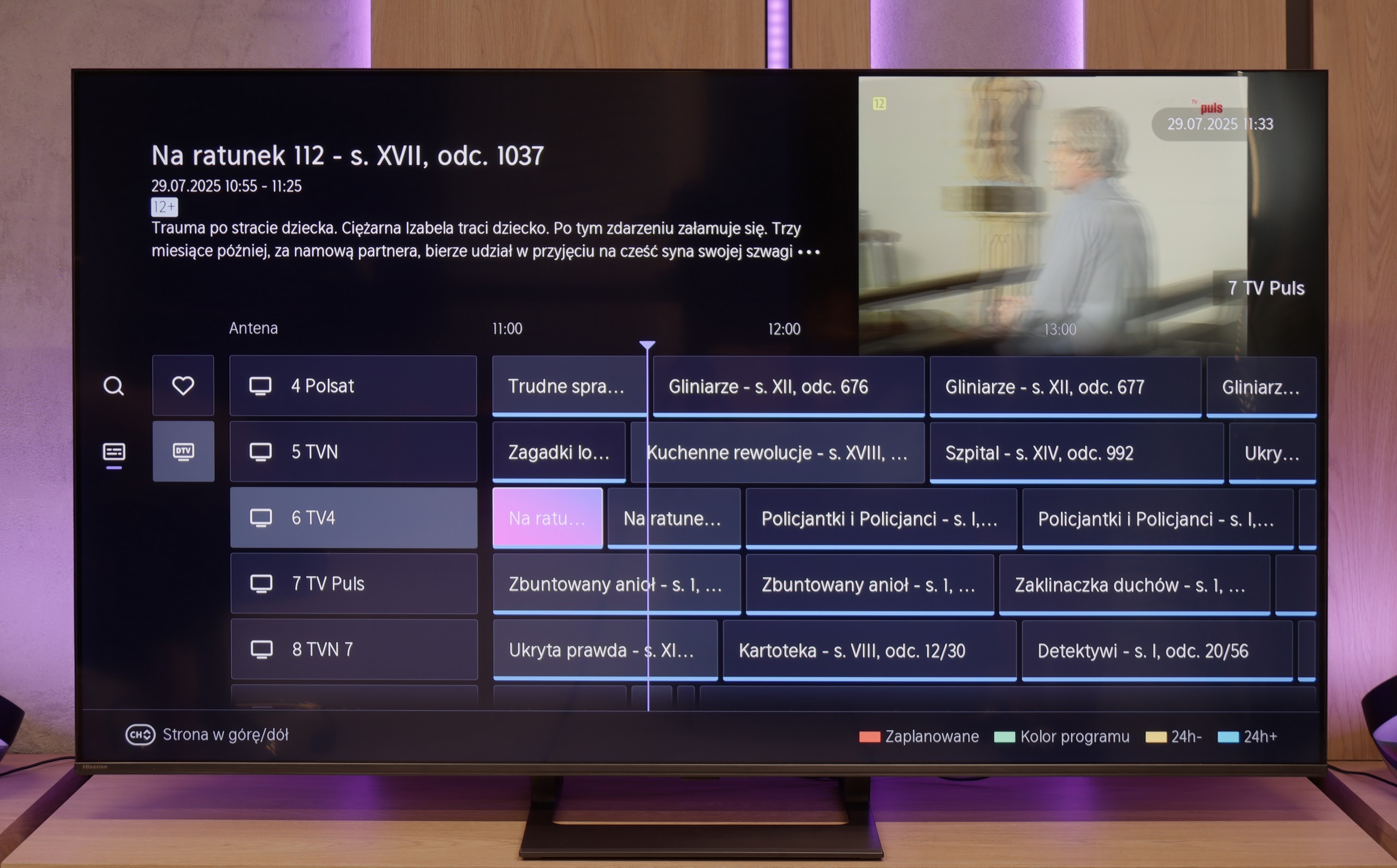


Brak funkcji PIP, obecne "MultiVision" czyli dzielenie ekranu między tv a urządzenie mobilne
Classic Features – E8Q
The Hisense E8Q is not only equipment for gamers or movie enthusiasts – it can also serve as a daily television for the entire family. We can record programs to USB, connect headphones or speakers via Bluetooth, and the entire interface – including the channel guide – is clear and easy to use. It only lacks the PiP function, but aside from that, the set of classic features is truly complete.
Smart TV – VIDAA System
The E8Q runs on the VIDAA system, which is becoming more refined year by year. Voice search in Polish works flawlessly, and it's easy to cast from your phone (AirPlay and screen mirroring). The system operates smoothly, without any hiccups, although – as is often the case with closed platforms – there may occasionally be one or two less popular apps missing. Therefore, it’s worth checking before purchase to see if everything we use daily is available there.
Playing files from USB
8.9/10
8.2/10
Supported photo formats:
Maximum photo resolution:

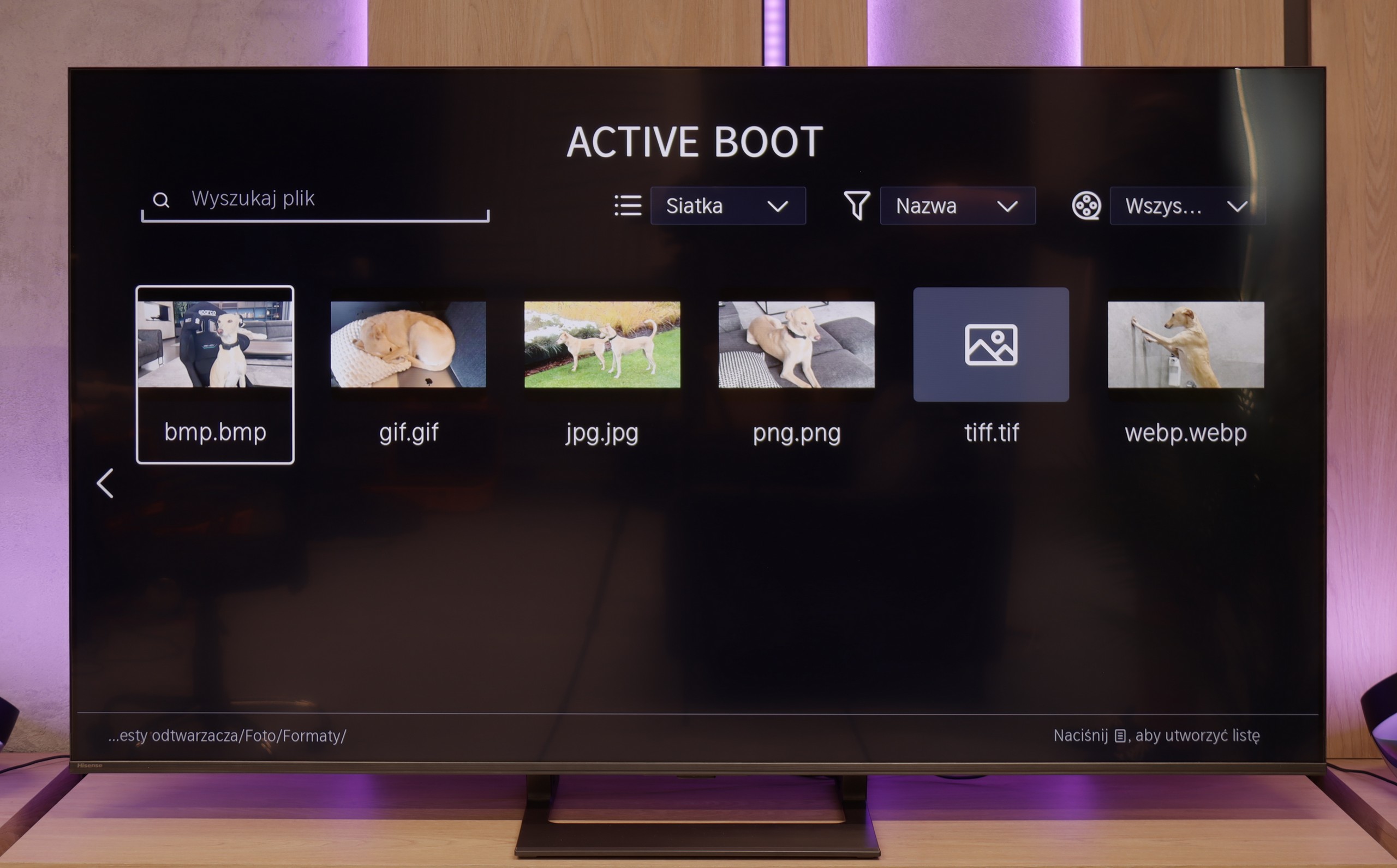
Thanks to the built-in player, the television is capable of playing most file formats available on external storage devices, making it a versatile tool for consuming multimedia. However, there may be certain limitations in the support of some formats, which can be inconvenient for more demanding users. Fortunately, the Google TV system allows for the installation of other media players from Google Play, which helps eliminate compatibility issues. This gives users the option to choose applications that best meet their needs, significantly increasing the functionality of the television.
The built-in media player in E8Q performs quite well. It supports most popular video and audio formats, and files from USB drives or external disks play without major issues. Polish characters? They are supported. Subtitles? They work. The only minor drawback is the occasional problem with displaying high-resolution images – especially those from cameras or smartphones. So if you plan to show vacation photos on a large screen, it’s worth checking in advance whether they will all load correctly from the drive’s memory or USB stick.
Apps
9.6/10
7.7/10














































Sound
6.9/10
5.5/10
- Subjective sound quality:6.9/105.5/10
- Dolby Digital Plus 7.1:
- Dolby True HD 7.1:
- Dolby Atmos in Dolby Digital Plus (JOC):
- Dolby Atmos in Dolby True HD:
- DTS:X in DTS-HD MA:
- DTS-HD Master Audio:
The sound of the TCL MQLED85 television can be described as decent, making it sufficient for everyday viewing of movies, TV shows, and games. The speakers branded with Onkyo offer surprisingly good audio quality, and the sound does not hiss or distort even at higher volume levels.
Unfortunately, the Hisense E8Q did not leave the best impression on us. Although on paper it has speakers with a power of 40 W (which is only slightly less than the 50 W in the U7Q), in practice, the difference is significant—and unfortunately not in favor of the E8Q. During testing, it quickly became apparent that something was off. When the volume was raised above 40-50%, the entire back housing began to resonate, and unpleasant crackling sounds emerged from the television. Even during regular viewing, it was hard not to notice this, and definitely hard not to hear it. In this form, it is difficult to talk about listening comfort. We do not rule out that this was a problem with a specific test unit, but nonetheless—it is worth keeping this in mind. If good sound is important to you, consider connecting a soundbar or… stick with the U7Q, which performs significantly better.


